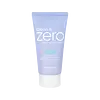What's inside
What's inside
 Key Ingredients
Key Ingredients

 Benefits
Benefits

 Concerns
Concerns

 Ingredients Side-by-side
Ingredients Side-by-side

Water
Skin ConditioningSodium Cocoyl Isethionate
CleansingGlycerin
HumectantButylene Glycol
Humectant1,2-Hexanediol
Skin ConditioningPolyglyceryl-4 Caprate
EmulsifyingCoco-Betaine
CleansingOlea Europaea Fruit Oil
MaskingHydroxyethylcellulose
Emulsion StabilisingSodium Chloride
MaskingEthylhexylglycerin
Skin ConditioningBetaine
HumectantSodium Nitrate
SoothingEucalyptus Globulus Leaf Oil
PerfumingCitrus Aurantium Bergamia Fruit Oil
MaskingFerula Galbaniflua Resin Oil
AntimicrobialAnthemis Nobilis Flower Oil
MaskingRosmarinus Officinalis Leaf Oil
MaskingCentella Asiatica Extract
CleansingDisodium Phosphate
BufferingPolysorbate 60
EmulsifyingSimmondsia Chinensis Seed Oil
EmollientSodium Phosphate
BufferingAsiaticoside
AntioxidantCentella Asiatica Root Extract
Skin ConditioningCentella Asiatica Leaf Extract
Skin ConditioningCentella Asiatica Flower/Leaf/Stem Extract
Skin ConditioningBifida Ferment Lysate
Skin ConditioningArginine
MaskingLactobacillus Ferment
Skin ConditioningVaccinium Angustifolium Fruit Extract
Skin ProtectingMadecassic Acid
Skin ConditioningAsiatic Acid
Skin ConditioningMadecassoside
AntioxidantWater, Sodium Cocoyl Isethionate, Glycerin, Butylene Glycol, 1,2-Hexanediol, Polyglyceryl-4 Caprate, Coco-Betaine, Olea Europaea Fruit Oil, Hydroxyethylcellulose, Sodium Chloride, Ethylhexylglycerin, Betaine, Sodium Nitrate, Eucalyptus Globulus Leaf Oil, Citrus Aurantium Bergamia Fruit Oil, Ferula Galbaniflua Resin Oil, Anthemis Nobilis Flower Oil, Rosmarinus Officinalis Leaf Oil, Centella Asiatica Extract, Disodium Phosphate, Polysorbate 60, Simmondsia Chinensis Seed Oil, Sodium Phosphate, Asiaticoside, Centella Asiatica Root Extract, Centella Asiatica Leaf Extract, Centella Asiatica Flower/Leaf/Stem Extract, Bifida Ferment Lysate, Arginine, Lactobacillus Ferment, Vaccinium Angustifolium Fruit Extract, Madecassic Acid, Asiatic Acid, Madecassoside
Water
Skin ConditioningCoco-Betaine
CleansingSodium Lauroyl Methyl Isethionate
CleansingArginine
MaskingSodium Chloride
MaskingBetaine
HumectantAcrylates/C10-30 Alkyl Acrylate Crosspolymer
Emulsion StabilisingHydroxyacetophenone
AntioxidantSodium Methyl Isethionate
EmulsifyingLauric Acid
CleansingCentella Asiatica Extract
CleansingSodium Laurate
CleansingMelaleuca Alternifolia Leaf Oil
AntioxidantEthylhexylglycerin
Skin ConditioningAllantoin
Skin ConditioningDisodium EDTA
1,2-Hexanediol
Skin ConditioningWater, Coco-Betaine, Sodium Lauroyl Methyl Isethionate, Arginine, Sodium Chloride, Betaine, Acrylates/C10-30 Alkyl Acrylate Crosspolymer, Hydroxyacetophenone, Sodium Methyl Isethionate, Lauric Acid, Centella Asiatica Extract, Sodium Laurate, Melaleuca Alternifolia Leaf Oil, Ethylhexylglycerin, Allantoin, Disodium EDTA, 1,2-Hexanediol
 Reviews
Reviews

Ingredients Explained
These ingredients are found in both products.
Ingredients higher up in an ingredient list are typically present in a larger amount.
1,2-Hexanediol is a synthetic liquid and another multi-functional powerhouse.
It is a:
- Humectant, drawing moisture into the skin
- Emollient, helping to soften skin
- Solvent, dispersing and stabilizing formulas
- Preservative booster, enhancing the antimicrobial activity of other preservatives
Arginine is an amino acid that is important for human development. Your body uses is it to produce hair keratin and skin collagen.
As a cosmetic ingredient, Arginine has antioxidant properties and can also help repair damaged skin. This ingredient is derived either synthetically or from animals.
Arginine isn't fungal acne safe when used in the presence of other lipids (fats, fatty acids, oils, esters, etc). Oils and fats occur naturally within the skin, so take caution when using Arginine if you're prone to fungal acne.
Learn more about ArginineBetaine is a common humectant (a substance that promotes retention of moisture). It's known to be gentle on the skin and can help balance hydration.
This ingredient is best for improving hydration and soothing irritated skin. Studies also show it helps even out skin tone.
Fun fact: Betaine is naturally created in the skin and body. The kind found within cosmetic products can be either plant-derived or synthetic.
Another name for betaine is trimethylglycine.
Learn more about BetaineCentella Asiatica Extract (Centella) is derived from an herb native to Southeast Asia. It is famous for its anti-inflammatory and soothing properties.
Centella is rich in antioxidants and amino acids, such as Madecassic Acid and Asiaticoside.
Studies show the compounds in centella help with:
The combination of all these properties makes centella effective at soothing, hydrating, and protecting the skin.
Other great components of centella include Vitamin A, vitamin C, several B vitamins, and Asiatic Acid.
Fun fact: Centella has been used as a medicine and in food for many centuries. As a medicine, it is used to treat burns, scratches, and wounds.
Learn more about Centella Asiatica ExtractCoco-Betaine is the natural version of Cocamidopropyl Betaine. It is often derived from coconuts.
Coco-Betaine is a surfactant, meaning it helps remove dirt and oil from the skin.
Ethylhexylglycerin (we can't pronounce this either) is commonly used as a preservative and skin softener. It is derived from glyceryl.
You might see Ethylhexylglycerin often paired with other preservatives such as phenoxyethanol. Ethylhexylglycerin has been found to increase the effectiveness of these other preservatives.
Chances are, you eat sodium chloride every day. Sodium Chloride is also known as table salt.
This ingredient has many purposes in skincare: thickener, emulsifier, and exfoliator.
You'll most likely find this ingredient in cleansers where it is used to create a gel-like texture. As an emulsifier, it also prevents ingredients from separating.
There is much debate on whether this ingredient is comedogenic. The short answer - comedogenic ratings don't tell the whole story. Learn more about comegodenic ratings here.
The concensus about this ingredient causing acne seems to be divided. Research is needed to understand if this ingredient does cause acne.
Scrubs may use salt as the primary exfoliating ingredient.
Learn more about Sodium ChlorideWater. It's the most common cosmetic ingredient of all. You'll usually see it at the top of ingredient lists, meaning that it makes up the largest part of the product.
So why is it so popular? Water most often acts as a solvent - this means that it helps dissolve other ingredients into the formulation.
You'll also recognize water as that liquid we all need to stay alive. If you see this, drink a glass of water. Stay hydrated!
Learn more about Water